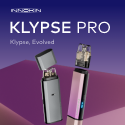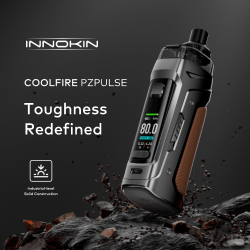Can we use pulse ratings when choosing and using batteries?
It’s tempting to do so. We pulse our batteries when we vape so it seems to make
sense that we can use a battery’s pulse rating when choosing which battery to buy or
determining how hard we can run it. But is this a good idea?
In a word…no.
There are several problems that prevent us from using pulse ratings when choosing a
battery. The biggest one is that there are no standards for setting a pulse rating.
This means there are some unanswered questions about any battery that claims to have
a pulse rating:
– We don’t know how long the pulse is. Is it one second or ten seconds? That can
significantly affect how hot the battery gets.
– How long are the rests between the pulses for that rating? It could be 10 seconds
or it could be a minute or longer. This will also greatly affects how hot the
battery gets.
– What criteria were used when establishing the rating? Maximum temperature? Minimum
voltage? Run time before dropping to a cutoff voltage? Number of cycles before the
capacity drops to a certain level? A combination of these?
Knowing the answers to these questions is important as it’s the only way we can
compare one battery to another. Without this information a battery’s pulse rating is
useless.
What if we just want to know how hard we can run a battery? No comparison between
batteries, just wondering if we can run a battery at its pulse rating instead of its
continuous current rating.
The answer to this is also no.
If we don’t know anything about how the pulse rating was set we can’t determine if
it’s safe to vape at that current level. What if the rating assumes a 2 second pulse
with one minute rests between pulses? If we vape hard with that battery it could get
too hot and become damaged or possibly even vent.
Even if how the pulse rating was set matches our vaping style, what happens if there
is a problem with the mod or if a mechanical mod’s button is accidentally pressed?
If you are vaping up near the pulse rating, and there’s trouble, then the battery
could be discharged continuously at a level way above its rating. This can easily
cause damage to the battery or force it to vent.
Did you know that Samsung, Sony, LG, Panasonic, and Sanyo don’t include any kind of
pulse rating for most of their batteries? The few batteries that have been given a
rating for a short duration discharge are only supposed to see that kind of current
once, e.g., when a battery pack is short circuited and the protection circuitry
takes a short time to shut off the current. Those pulse “ratings” don’t tell you how
often you can do this so we can’t assume we can repeatedly vape at anywhere near
those current levels.
What about those who have been vaping at levels far higher than the continuous
current rating of their batteries? Why haven’t their faces melted off? It’s a little
bit of luck and it helps a lot to be very familiar with your mod, how to maintain
it, Ohm’s Law, and battery safety. But if you’re vaping at levels at or near the
battery’s claimed pulse rating (which we know is useless) then you’re risking
getting into a dangerous situation if there’s a problem with the mod.
It’s up to you to decide how you want to vape and the risks you want to take. I
highly recommend though not exceeding the continuous current rating of the batteries you’re using.
Know your mod, know your batteries, and vape safe.














 Store
Store












